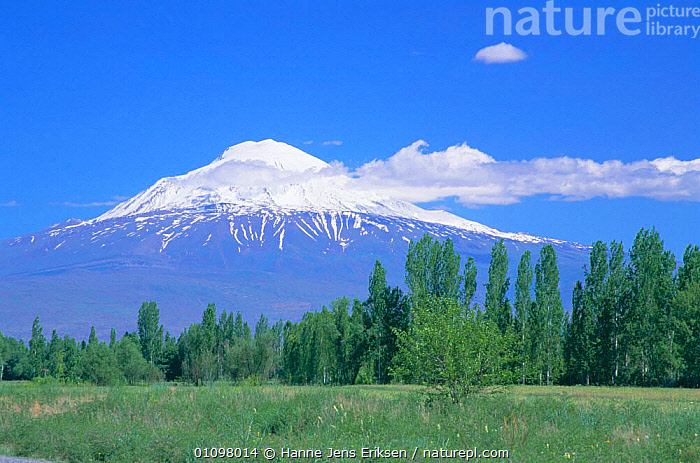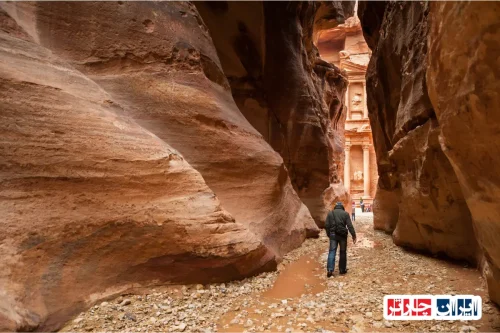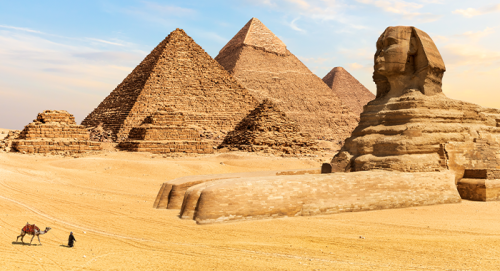Discover the Majestic Mount Ararat in Eastern Anatolia, Turkey
Mount Ararat, located in the heart of Eastern Anatolia, Turkey, stands as a symbol of natural beauty and historical significance. This iconic mountain, renowned for its towering presence and breathtaking landscapes, attracts countless travelers and adventurers each year. Its unique geological features and cultural heritage make it a must-visit destination for those seeking to explore the rich tapestry of history and nature in Turkey. Whether you’re interested in hiking, photography, or learning about ancient legends, Mount Ararat offers an unforgettable experience that combines natural splendor with deep cultural roots. For travelers planning their journey, understanding the significance of Mount Ararat in Eastern Anatolia, Turkey, is essential to appreciating its role as a natural and cultural landmark. To learn more about the region and plan your trip, visit ایران چارتر.

Discover the Rich History and Mythology of Mount Ararat in Eastern Anatolia
Mount Ararat in Eastern Anatolia has long been a symbol of spiritual significance and cultural heritage. Throughout history, this majestic mountain has been revered as a sacred site, intertwined with ancient legends and religious narratives. The local folklore and historical texts depict Mount Ararat as a divine realm where gods and spirits once dwelled, emphasizing its importance in regional mythology. These stories have been passed down through generations, shaping the cultural identity of the peoples living in its vicinity. The mountain’s connection to biblical stories, especially the story of Noah’s Ark, further elevates its mythic status, making it a focal point for pilgrims and explorers alike. Its legendary status continues to inspire curiosity and reverence among historians, theologians, and travelers. Exploring the myths surrounding Mount Ararat offers insight into the spiritual worldview and cultural values of the ancient civilizations that considered it a sacred landmark. Today, these stories remain a vital part of the local heritage, attracting visitors eager to connect with the mountain’s legendary past.
Geographical Location and Strategic Importance of Mount Ararat in Eastern Anatolia
Situated at the crossroads of Eastern Anatolia, Mount Ararat spans the borders of Turkey, Armenia, Iran, and the Nakhchivan Autonomous Republic. Its prominent elevation and strategic position have historically made it a key geographical feature in the region. The mountain’s proximity to ancient trade routes and migration paths has enhanced its significance as a natural landmark. Its commanding height offers panoramic views of the surrounding landscapes, making it an essential point for territorial control and regional defense. Throughout history, controlling access to Mount Ararat meant overseeing vital trade corridors and border passages. Its strategic location has also contributed to its cultural importance, serving as a natural boundary and a symbol of territorial sovereignty. The mountain’s position continues to influence regional geopolitics, with nations recognizing its importance for national identity and security. As a natural fortress and cultural icon, Mount Ararat remains a vital element in the geopolitical landscape of Eastern Anatolia.
Scientific and Geological Secrets of Mount Ararat’s Volcanic Activity
Mount Ararat is a dormant stratovolcano with a complex geological history. Its formation dates back millions of years, shaped by ancient volcanic activity and tectonic movements. The mountain’s geological structure reveals layers of volcanic ash, lava flows, and mineral deposits, offering valuable insights into Earth’s volcanic processes. Scientific studies indicate that Mount Ararat’s volcanic activity was primarily driven by subduction zone dynamics, resulting in its towering presence. The region exhibits signs of past eruptions, with geothermal activity and gas emissions still detectable beneath the surface. Researchers analyze mineral compositions and seismic data to understand its eruption patterns and potential future activity. These geological features make Mount Ararat a significant site for earth sciences, providing clues about regional tectonics and volcanic evolution. Understanding its geological secrets helps scientists predict volcanic behavior and assess natural hazards in the area. The mountain’s scientific importance continues to attract geologists and volcanologists eager to uncover its hidden geological history.
The First Climbers and Adventurers of Mount Ararat
Climbing Mount Ararat has long been a challenge for explorers and mountaineers. The earliest recorded attempts date back to the 19th century, with notable expeditions by European explorers seeking to reach its summit. Pioneers such as Friedrich Parrot and Khachatur Abovian successfully ascended the mountain, overcoming treacherous ice, snow, and unpredictable weather conditions. Their journeys symbolize human perseverance and the desire to conquer nature’s giants. Over the years, mountaineers have faced numerous obstacles, including altitude sickness, crevasses, and volcanic activity. Modern climbers now follow well-established routes, equipped with advanced gear and guided by experienced professionals. The ascent to Mount Ararat’s summit remains a popular yet demanding adventure, attracting thrill-seekers and nature lovers from around the world. These expeditions continue to inspire stories of resilience and exploration, cementing Mount Ararat’s status as a premier mountaineering destination in Eastern Anatolia.
The Religious and Cultural Significance of Mount Ararat in Local Beliefs
Mount Ararat holds profound religious importance for various communities in the region. According to biblical tradition, it is the resting place of Noah’s Ark, making it a sacred site for Christians, Jews, and Muslims alike. The mountain’s association with divine salvation and renewal has fostered a deep spiritual connection among believers. Local legends describe the mountain as a divine gateway, where heaven and earth meet, and where sacred events unfolded. Religious pilgrims often visit the area to seek spiritual blessings and connect with their faith heritage. The mountain also features in numerous cultural rituals, festivals, and oral traditions, reinforcing its role as a symbol of hope and divine intervention. Its sacred status influences local customs and reverence, with some communities considering certain areas on the mountain as spiritually protected zones. The enduring religious significance of Mount Ararat continues to shape the cultural landscape of Eastern Anatolia, blending faith, history, and tradition into a unique spiritual tapestry.
Impact of Climate Change on Mount Ararat’s Glaciers and Natural Landscape
Recent decades have seen significant changes in Mount Ararat’s glaciers and surrounding environment due to climate change. Rising temperatures have accelerated the melting of ice caps and glaciers, threatening the mountain’s iconic snowy peaks. This reduction in ice mass not only alters the scenic beauty but also impacts local water sources and ecosystems. Scientists observe that the retreat of glaciers could lead to increased erosion, landslides, and changes in local hydrology. The loss of glacial cover also endangers the preservation of archaeological and geological sites, including ancient volcanic formations. Monitoring programs indicate that the pace of glacier melting is unprecedented in recent history, emphasizing the urgent need for environmental protection measures. Addressing these changes requires collaborative efforts to mitigate climate impacts and implement sustainable tourism practices. Protecting Mount Ararat’s natural landscape is essential for maintaining its ecological integrity and cultural heritage for future generations.
Essential Tips for Safe Trekking and Climbing in Mount Ararat
Embarking on a trek or climb in Mount Ararat demands thorough preparation and safety awareness. Proper gear, including insulated clothing, climbing equipment, and navigation tools, is vital for a successful ascent. It is recommended to travel with experienced guides familiar with the mountain’s routes and weather conditions. Prior to the expedition, climbers should assess their physical fitness and acclimate gradually to high altitudes to prevent altitude sickness. Weather conditions can change rapidly, so continuous monitoring and flexible planning are crucial. Respect for the environment and local regulations helps preserve the mountain’s natural beauty and cultural significance. Carrying sufficient supplies, including food, water, and emergency kits, ensures safety during the journey. Engaging in responsible tourism not only enhances the experience but also contributes to the conservation of Mount Ararat’s unique ecosystem. With proper preparation, climbers can enjoy a memorable and safe adventure on this iconic peak.
Nearby Attractions and Hidden Gems Around Mount Ararat
The region surrounding Mount Ararat is rich with natural and historical attractions worth exploring. Visitors can discover lush valleys, ancient ruins, and traditional villages that offer a glimpse into local life and history. The nearby Iğdır Plain and the Aras River provide scenic landscapes and opportunities for nature photography. Historical sites such as the Erek Castle and the ancient city of Ani showcase the region’s deep cultural roots. These attractions complement the mountain experience, creating a comprehensive travel itinerary for adventurers and history enthusiasts. The area’s diverse flora and fauna also make it ideal for eco-tourism and wildlife observation. Exploring these hidden gems enriches the journey, offering a deeper understanding of the region’s natural beauty and cultural heritage. Whether hiking, sightseeing, or cultural immersion, the surroundings of Mount Ararat promise unforgettable experiences for every traveler.
Local Legends and Folklore About Mount Ararat in Turkish and Armenian Cultures
Mount Ararat is embedded in the folklore and oral traditions of both Turkish and Armenian communities. In Armenian culture, it is revered as the resting place of Noah’s Ark, symbolizing salvation and divine promise. Stories recount the mountain as a sacred site where heaven and earth converge, inspiring myths of divine intervention and resilience. Turkish legends often depict Mount Ararat as a symbol of strength and endurance, representing the natural beauty and cultural identity of the region. Folklore includes tales of hidden treasures, mystical creatures, and spiritual guardians residing on the mountain. These stories have been preserved through poetry, songs, and storytelling, reinforcing the mountain’s mythic status. The shared cultural narratives highlight the mountain’s significance as a symbol of hope, faith, and cultural unity. Exploring these legends offers a fascinating perspective on how Mount Ararat continues to influence the spiritual and cultural fabric of the region.
Future Challenges and Conservation Strategies for Mount Ararat
Protecting Mount Ararat amidst environmental and geopolitical pressures is a pressing concern. Increasing tourism, urban development, and climate change pose risks to its natural and cultural heritage. Implementing sustainable tourism practices and establishing protected areas are essential steps to conserve the mountain’s ecological integrity. Collaborative efforts among local authorities, environmental organizations, and communities are vital for effective management. Raising awareness about the importance of preserving Mount Ararat’s unique landscape can foster responsible visitation and conservation. Scientific research and monitoring programs help identify emerging threats and inform policy decisions. Education campaigns can engage local populations in safeguarding their cultural and natural assets. Ensuring the mountain’s preservation for future generations requires a comprehensive approach that balances development with environmental stewardship. By addressing these challenges proactively, Mount Ararat can continue to inspire awe and cultural pride for years to come.

FAQ about Mount Ararat in Eastern Anatolia
- What is the historical significance of Mount Ararat?
- Mount Ararat has long been a symbol of spiritual and cultural heritage. It is revered in legends and religious narratives as a sacred site where gods and spirits once dwelled. Its connection to biblical stories, especially Noah’s Ark, elevates its importance in regional mythology. These stories have been passed down through generations, shaping local identity and spiritual beliefs.
- Where is Mount Ararat located geographically?
- Mount Ararat is situated at the crossroads of Eastern Anatolia, spanning Turkey, Armenia, Iran, and the Nakhchivan Autonomous Republic. Its strategic position has historically made it a key geographical landmark, offering panoramic views and serving as a natural boundary in the region.
- What are the geological features of Mount Ararat?
- Mount Ararat is a dormant stratovolcano with a complex geological history dating back millions of years. Its layers include volcanic ash, lava flows, and mineral deposits. Scientific studies suggest its formation was driven by tectonic movements, and geothermal activity is still present beneath the surface, making it significant for earth sciences.
- Who were the first climbers to reach Mount Ararat?
- The earliest recorded ascents date back to the 19th century, with explorers like Friedrich Parrot and Khachatur Abovian successfully reaching the summit. Their expeditions demonstrated human resilience against harsh weather, ice, and snow conditions. Modern climbers follow established routes with advanced gear, continuing the mountain’s legacy as a challenging mountaineering destination.
- Why is Mount Ararat important in local religious beliefs?
- Mount Ararat holds profound religious significance as the resting place of Noah’s Ark, making it sacred for Christians, Jews, and Muslims. It is seen as a divine gateway where heaven and earth meet. Pilgrims visit the mountain seeking blessings, and it features in various cultural rituals and oral traditions, symbolizing hope and divine intervention.
- How is climate change affecting Mount Ararat?
- Recent decades have seen accelerated melting of glaciers and snow caps due to rising temperatures. This affects the mountain’s scenic beauty, water sources, and ecosystems. The retreat of glaciers also poses risks such as erosion and landslides, threatening archaeological sites and geological formations. Monitoring efforts highlight the urgent need for environmental protection.
- What are the safety tips for trekking or climbing Mount Ararat?
- Preparation is key: use proper gear, travel with experienced guides, and assess your physical fitness. Be aware of rapid weather changes and acclimate gradually to high altitudes. Carry sufficient supplies and respect local regulations. Responsible tourism helps preserve the mountain’s natural and cultural heritage.
- What attractions are near Mount Ararat?
- The surrounding region offers lush valleys, ancient ruins like Erek Castle, and the historic city of Ani. The Aras River and Iğdır Plain provide scenic landscapes. These sites complement the mountain experience, offering opportunities for sightseeing, cultural exploration, and eco-tourism.
- What folklore is associated with Mount Ararat?
- In Armenian culture, it is believed to be the resting place of Noah’s Ark, symbolizing salvation. Turkish legends depict it as a symbol of strength and endurance. Folklore includes tales of hidden treasures and mystical creatures. These stories are preserved through songs, poetry, and oral traditions, emphasizing its mythic status.
- What are the future challenges for Mount Ararat’s preservation?
- Increasing tourism, urban development, and climate change threaten its natural and cultural heritage. Sustainable tourism practices, protected areas, and community involvement are essential. Scientific research and awareness campaigns can help address these challenges and ensure the mountain’s preservation for future generations.
- How does Mount Ararat influence regional geopolitics?
- Its strategic location at regional borders makes it significant for national identity and security. Control over access and surrounding areas historically impacted trade routes and territorial sovereignty. Today, its geopolitical importance continues to shape regional relations and policies.
- What is the significance of Mount Ararat in cultural identity?
- Mount Ararat symbolizes resilience, faith, and cultural unity for local communities. Its legends and religious associations foster a sense of pride and belonging. The mountain’s mythic status continues to inspire art, folklore, and cultural expressions across the region.
- Are there any archaeological sites on Mount Ararat?
- Yes, the mountain and its surroundings contain geological formations and ancient artifacts that attract researchers. However, due to its remote and challenging terrain, extensive archaeological excavations are limited. Preservation efforts aim to protect these valuable sites from environmental and human threats.
- What are the best times of year to visit Mount Ararat?
- The most suitable seasons are late spring and early autumn when weather conditions are milder. Summer offers warmer temperatures, but snow and ice can still be present at higher altitudes. Winter expeditions are more challenging due to heavy snowfall and cold temperatures.
- How can I prepare for a safe climb on Mount Ararat?
- Ensure proper physical conditioning, acquire suitable climbing gear, and travel with experienced guides. Acclimate gradually to high altitudes and monitor weather forecasts. Carry emergency supplies, and respect local regulations to ensure a safe and enjoyable experience.























